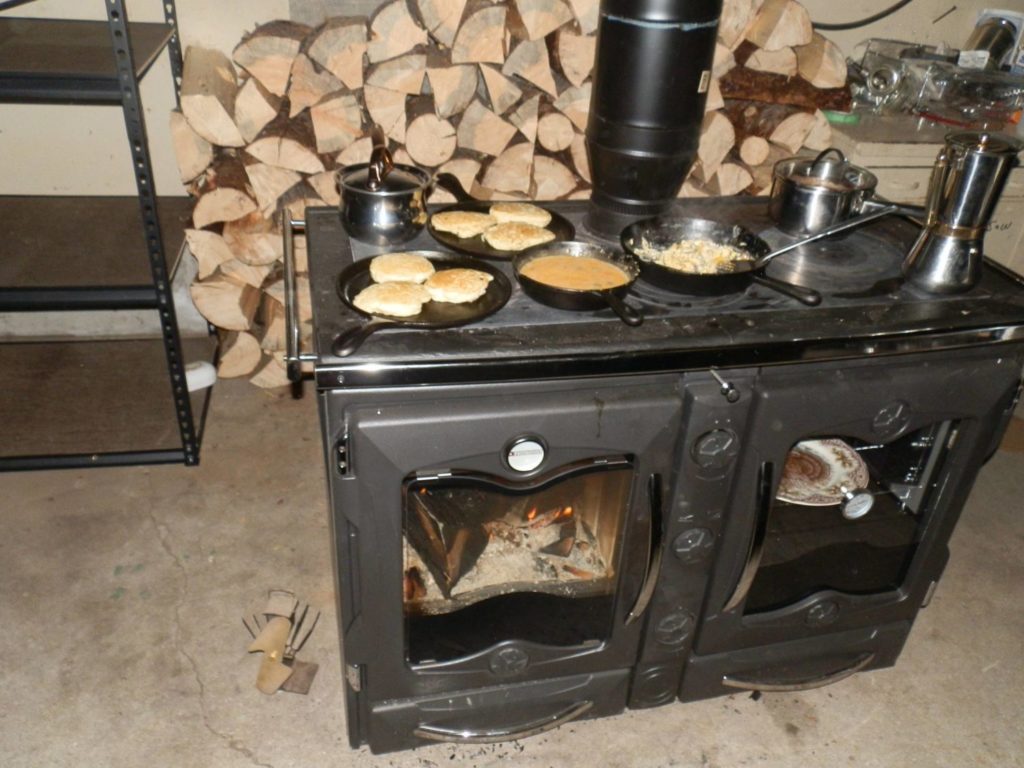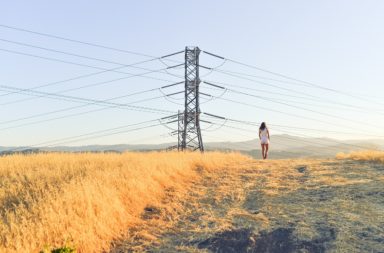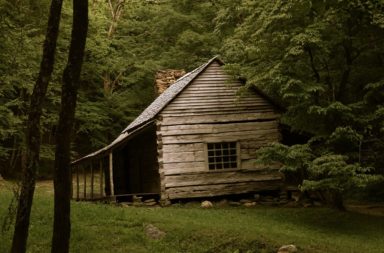Are you prepared to wake up tomorrow morning and survive (or even thrive) in an 1800’s era existence? If not, there is no time to waste, because one day soon you just might hop out of bed in the morning to find the entire world has changed overnight.
Based on 50 years of data studying our sun the space agency NASA has concluded in a report that there is a 12 percent chance of a Carrington level event occurring that will take our electrical grid down within this decade. For those not familiar with the term the solar storm of 1859 (also known as the Carrington Event) was a powerful geomagnetic solar storm.
Back in 2011 before solar storms were on most of the preparedness communities radar I wrote a fictional book called Preppers Road March to create awareness about this type of threat. I wanted to paint everyone a realistic picture of the few first days of what surviving a coronal mass Ejection (CME) would be like and provide some basic survival tips and tricks.
My background includes many higher level degrees in emergency management and based on that I knew the government did not have a response plan for this type of disaster other than the continuity of government.

An alternative heating for inside of your home as well as a portable option to stove in your vehicle, should be worked into your preparedness budget. The rocket stove pictured stands only about 36 inches tall, with a 55 inch tall gravity ed hopper. It is capable of holding 40 pounds of pellets that can produce heat up to a full 16 hours. It uses one-fourth of the wood of a standard wood stove, making it a great option for a suburban or urban home.
The solar flares were so powerful that “people in the northeastern United States could read newspaper print just from the light of the aurora. The geomagnetic disturbances impacting earth were so powerful that United States telegraph operators reported sparks leaping from their equipment—some bad enough to set fires. Now if something similar truly happened today and the chances are stated clearly that this could occur at anytime, just imagine the world’s high-tech infrastructure grinding to a catastrophic halt.
The government didn’t even tell us until two years after a near miss solar event had already occurred that a recently published paper pointed out and revealed just how close a CME came to hitting Earth and shutting down our grid for at least 10 years. If this extreme solar storm had hit in July 2012, and the Earth been a week earlier in its rotation, impact would have been made and life as we knew it would have been thrown back to the 1800s. Many other things can take out our grid, cyber warfare, terrorist physical attack, natural disaster etc. Depend on your mind to carry you through, bug out bags are great but try humping one through flooded streets like the ones in Hurricane Katrina and you will rethink your strategies.
Now if there was a 12 percent chance of you getting into a car wreck every time you pulled out of your driveway your insurance rates would go through the roof, yet you would still be required to invest in this kind of preparedness. Many preppers and survivalists over the years have debated on what sort of investment or equipment is needed to survive such a disaster but you must be very careful when reading some of the information out there. Unfortunately, many so called experts are mistaken or unrealistic in their expectations of what is truly necessary to survive this type of societal collapse.
Off grid heating and cooking options should be a top priority in your survival plan, no matter where you live.
I also knew from reviewing many public service announcements that went unheeded by the residents of the hurricane prone gulf coast, that to prepare for an inevitable disaster I had to formulate a better plan to get the word out on this type of specific SHTF scenario. I feel it is essential to give advice on how to survive such a disaster with just the basics a person might have on hand.
My readers told me it was much easier to remember survival skills in my books by remembering what a character of mine did in a certain situation than reading a dry survival manual, so now, over 50 books later, I am still writing in the same style and graduating my readers to a higher degree of resilience and preparedness in this format.
William R. Forstchen, in his excellent book One Second After, made people aware of the threat of a nuclear EMP (electromagnetic pulse) taking the electrical grid down and the devastation and misery that the populace would endure as well as what a long term grid down event might be like and the need for community, but he did not touch on personal preparedness much.
This awareness of a mega disaster possibility soon had the internet forums abuzz with speculations on what tools were needed in a grid down situation but instead of a community oriented approach, many people focused on the lawlessness and desperation that would occur in a societal collapse and spent most of their time trying to build the ultimate bug out bag or spending way too much on guns and ammunition.
In my classic Prepper Trilogy, I start my hero out in the middle of a big city with his bug out bag 20 miles in the wrong direction, 180 miles to get home and just the clothes on his back to face what only he and a few others recognize is happening around them. The point is, if you want to prepare for a solar storm, you start by investing in yourself. You gain knowledge first, not stuff.
Knowledge can never be stolen or lost. My credo I try to teach my readers is to “Prepare to lose everything but your mind.” Learn the basics of survival with nothing and learn to repurpose common everyday items to survive with. If you lose your gear or a piece of equipment breaks, you will still have peace of mind and won’t be freaking out about it. You will be a true survivor that can maintain their calm and assist others with or without equipment because to survive long term you will need others and community.
There are, however, many ways to increase your viability and comfort should the sun take our grid down and I often get an opportunity to review gear. You need a means to cook your food, boil water etc. and the most fuel efficient discreet way in regards to smoke to do this is using what is called a rocket stove. I have had the opportunity to watch the evolution of rocket stoves and am blessed to know one of the best technological innovators in the market, Todd Albi of SilverFire.
Heat in an apartment or other small area without a ready fuel supply is the biggest winter challenge when trying to prep for a grid down situation and the best solution I have found to date is the Hunter Model stove he sells that has a chimney to pipe the gases and smoke out a window. You will need to put a cast iron griddle or large frying pan on top of it however to generate heat as the sides are insulated and cool to the touch.
After you have purchased a TLUD (Top Loading Under Draft) stove like the Silverfire Hunter or a regular rocket stove like their Survivor model you need to think about feeding it. This is where you have a major advantage over most people in a grid down situation because it will burn any biomass. Think about just wandering around picking up sticks and twigs and not getting out trying to cut heavy firewood. You can just get your hatchet out and bust up the coffee table if you had too!
This is a huge advantage, particularly if you live in the inner city and lack even the presence of trees to assist in your survival. Think about also the elderly or special needs survivors that will find it a easy task to just wander a small wooded lot and find free fuel laying on the ground sufficient to cook a meal or boil water!
When using this type of stove, there is the added benefit of having tons of free and readily available fuel around. Some of the best places to score free fuel is at local cabinet shops or construction sites in the form of wood scraps that are perfect to feed your marvelous cooker. The site foreman or the store owner will likely be willing to let you take all the scrap wood you want for free to save them time and money cleaning it up. Fill up a box with this type of material and have it stored for the rainy day you might need dry wood for a disaster.
Starting these types of wood stoves is simple and easy. I have done it with everything from a ferro rod and a Vaseline soaked cotton ball, plain paper and a match, dry pine needles and a BIC to Doritos and a zippo lighter. But, my favorite method by far is fatwood or kindling found in the center of old pine tree stumps. Failing that, I have 4 or 5 pounds of cedar heartwood kindling put back that I bought off of Ebay for about 15 dollars – shipping included. I keep it around for fire starter for my wood stove.
Truth be known, I can be a bit lazy when going to prepper campouts and there has been times when it seemed everyone already scrounged all the good sticks next to my campsite – not a good thing when I want my early coffee and breakfast first thing in the morning. Three sticks of that hot easy to light stuff does the task very simply and easily in my Survivor or Scout model with no fuss or muss. I also use it to demo my stoves to the oohs and ahhs of my admiring prepper school survival crowds.
Be sure to check out SilverFire’s ingenious Economy Scout Stove and Mini 2 Liter Dragon Pot for even more inexpensive off the grid fuel alternatives.
I keep the Economy Scout Stove in my bug out bag – it only weighs 12 ounces. Think about me and you walking down the road and I need to purify water or cook a meal. I will be done with the task before you can even get a highly visible, smoky and labor intensive campfire going and only need a few twigs or a pine cone or two to get the task done.
Prep smarter, work less, and survive longer is at foundation of not only my personal prepping, but in all my writings and presentations.


